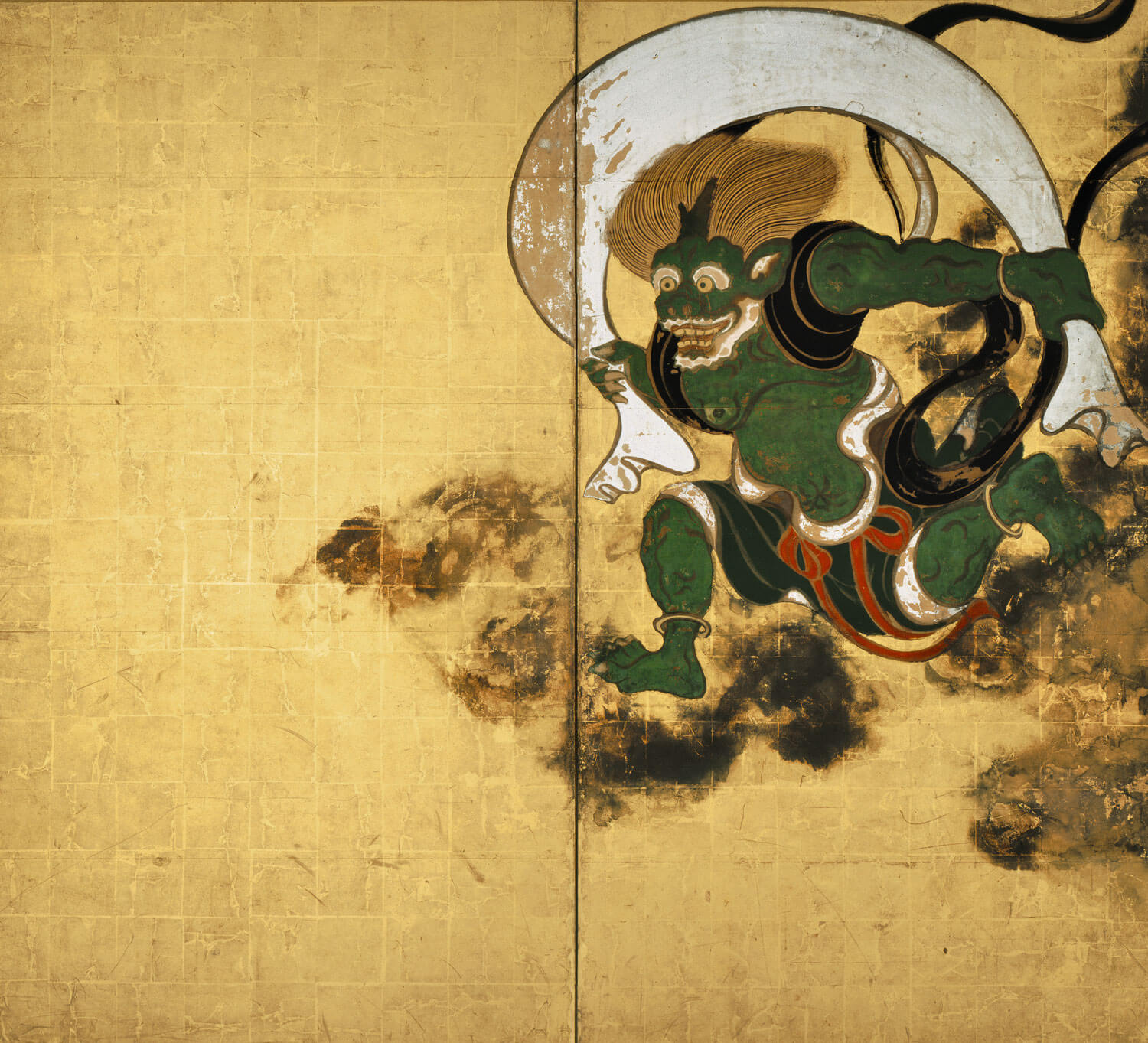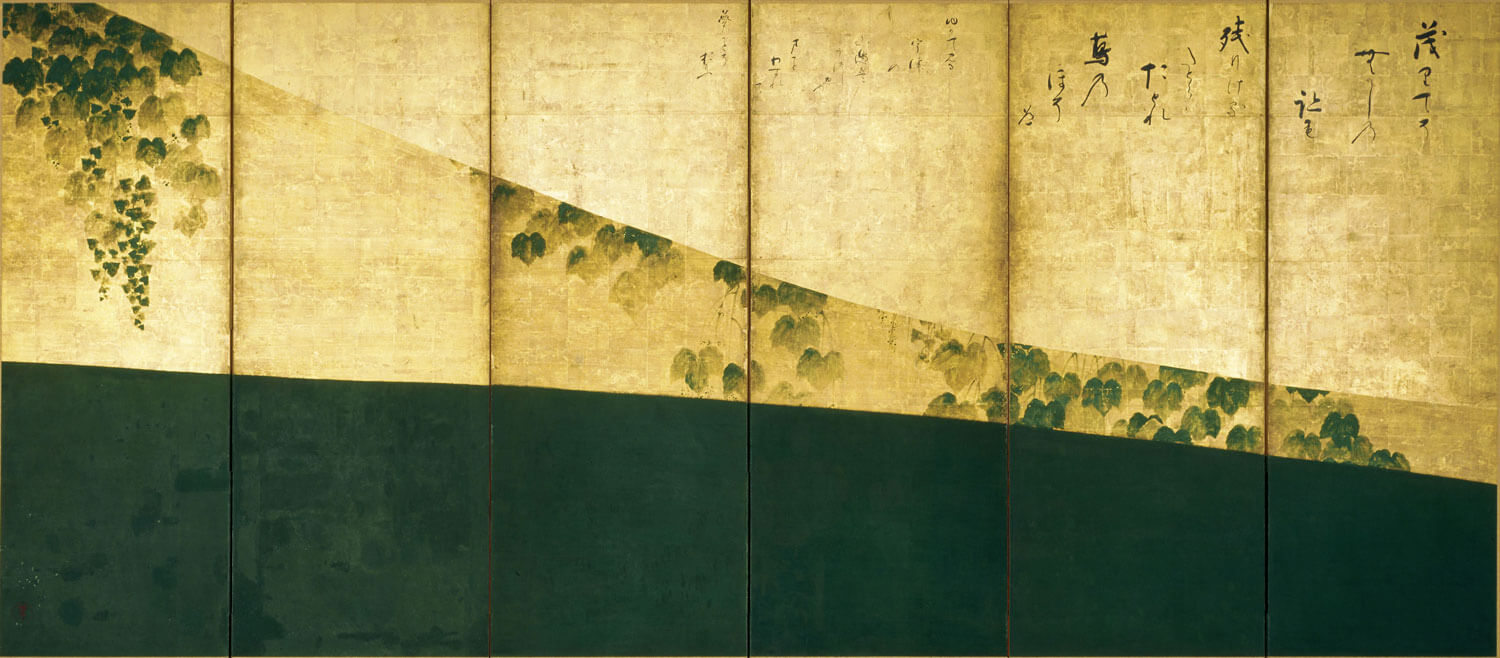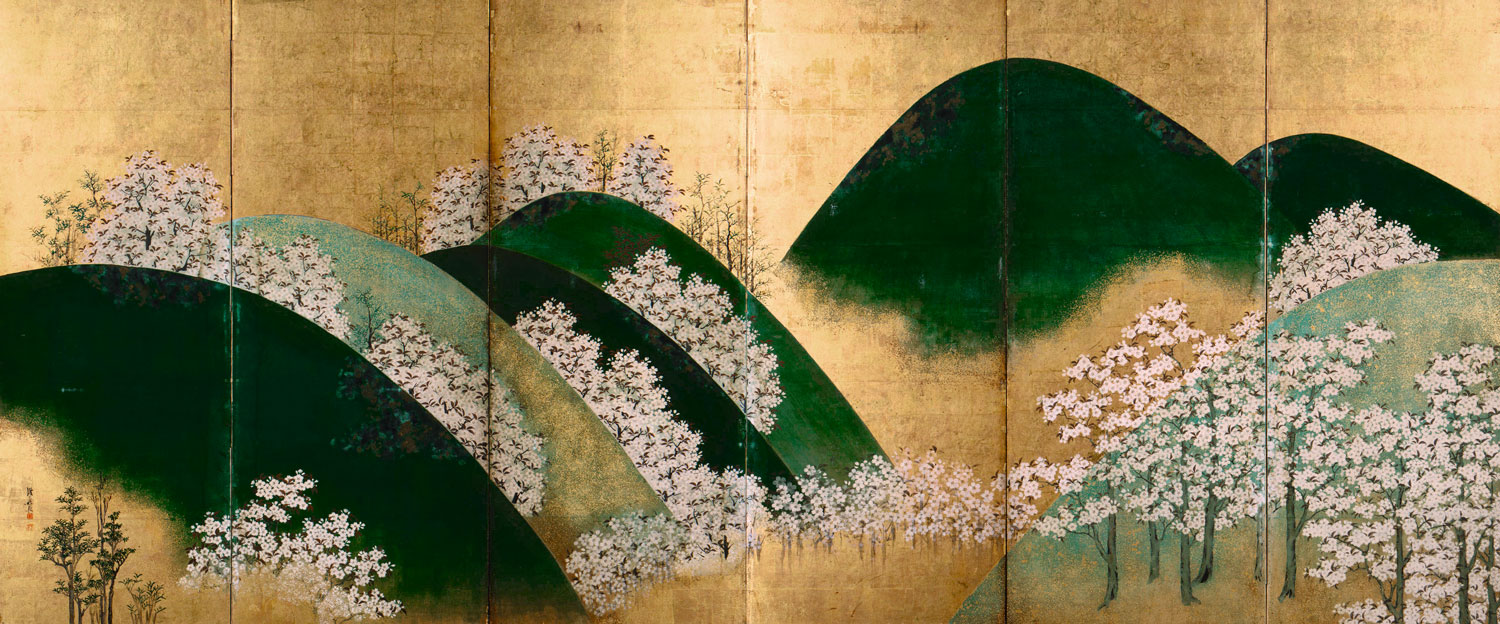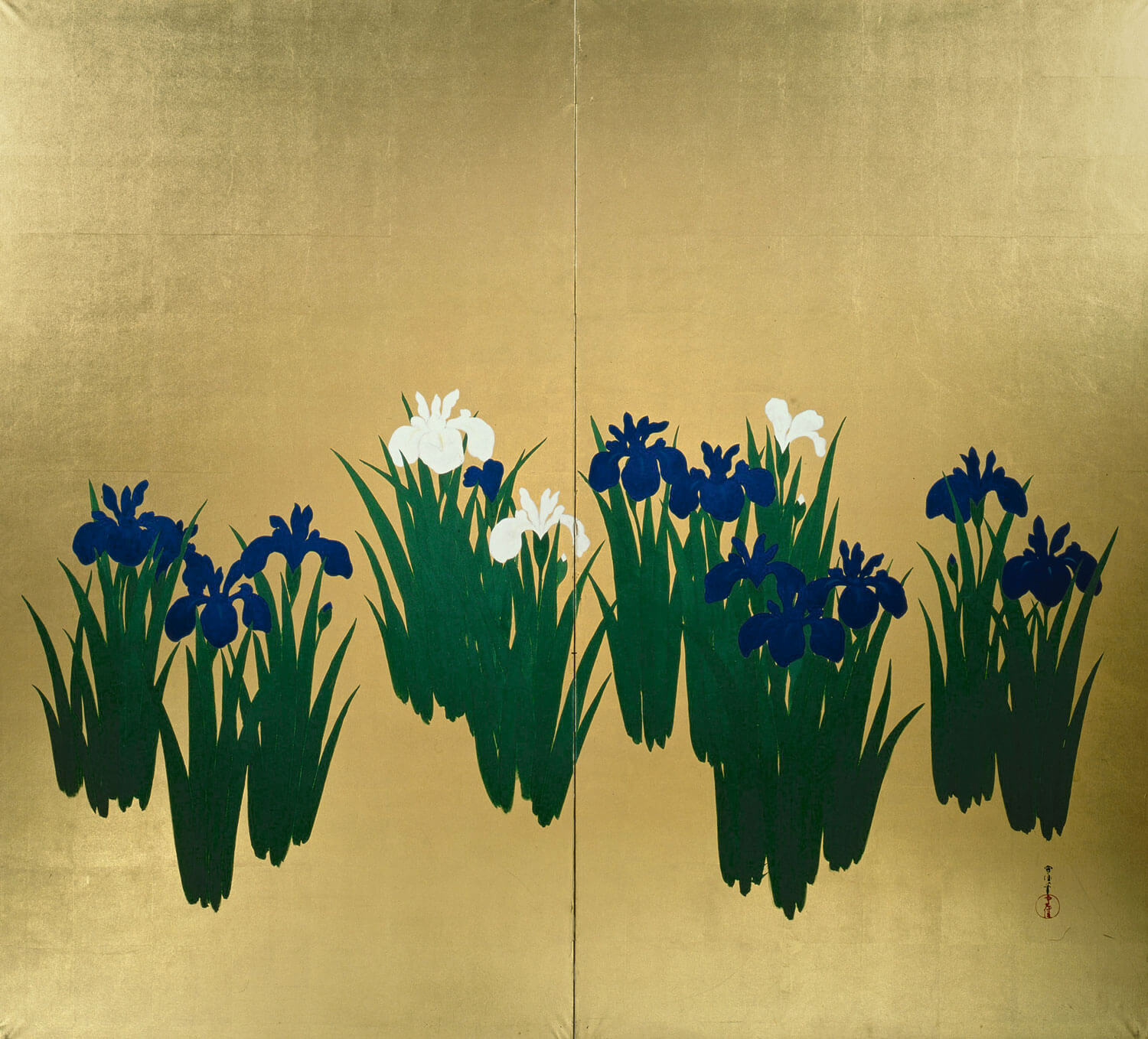The Rinpa School Showcased at the Musée Cernuschi in Paris
Rare pieces from this major movement in Japanese painting, which emerged in the 17th century, were exhibited in Europe for the first time.

Tawaraya So-tatsu, ‘Wind and Thunder Gods’, 17th century, a pair of two-folded screens, ink and colors on a golden sheet, Kyoto, Kenninji, classified as ‘National Treasure’ in Japan
From 26 October to 27 January 2019, the Musée Cernuschi paid homage to the Rinpa decorative art movement in the exhibition Treasures of Kyoto, Three Centuries of Rinpa Creations. Despite still being relatively unknown within art history, this style was born out of one of the major schools in Japanese painting.
Having emerged in the 17th century in Kyoto, the former capital of and heart of traditional culture in Japan, the Rinpa movement is renowned for its refined nature.
An aesthetic derived from spirituality
This movement is marked by its spirituality and its unique aesthetic where pared-down forms are complemented by bright colours. Artists drew inspiration from nature, literature and classical theatre.
Presenting painted scrolls, illustrated books, ceramics and lacquered objects, the exhibition Treasures of Kyoto, Three Centuries of Rinpa Creations highlighted the diversity of the artwork produced as part of the Rinpa movement. The masterpieces on show included the screen Fujin Raijin-zu byobu (Wind and Thunder Gods), classified as a National Treasure in Japan and exhibited in Europe for the first time.
Treasures of Kyoto, Three Centuries of Rinpa Creations (2018), an exhibition that took place at the Musée Cernuschi in Paris from 26 October 2018 until 27 January 2019.

Tawaraya So-tatsu, ‘Wind and Thunder Gods’, 17th century, a pair of two-folded screens, ink and colors on a golden sheet, Kyoto, Kenninji, classified as ‘National Treasure’ in Japan

Attributed to Tawaraya So-tatsu, inscription by Karasumaru Mitsuhiro, ‘Narrow Ivy Road’, 17th century, a pair of six-fold screens, ink and colors on a golden sheet, Kyoto, Shokokuji, classified as ‘Important Cultural Property’ in Japan

Watanabe Shiko, ‘Mount Yoshino’, left screen, 18th century, a pair of six-fold screens, ink and colors on a golden sheet, courtesy of Tokyo National Museum, Image: TNM Image Archives

Kamisaka Sekka, ‘Irises’, 1920-40, a pair of two-folded screens, ink and colors on a folden sheet, private collection, Kyoto
TRENDING
-
The Tattoos that Marked the Criminals of the Edo Period
Traditional tattoos were strong signifiers; murderers had head tattoos, while theft might result in an arm tattoo.

-
Paris, Tokyo: Robert Compagnon
With his co-chef and talented wife, Jessica Yang, Robert Compagnon opened one of the top new restaurants in Paris: Le Rigmarole.
 3:31
3:31 -
Chiharu Shiota, Red Threads of the Soul
Last year, more than 660,000 people visited the retrospective 'Chiharu Shiota: The Soul Trembles' exhibit at the Mori Art Museum.

-
‘Before Doubting Others, Doubt Yourself. Who Can Truly Say a Dish Isn’t What It Used to Be?’
In ‘A Non-Conformist’s Guide to Surviving Society’, author Satoshi Ogawa shares his strategies for navigating everyday life.

-
The Story of Sada Yacco, the Geisha who Bewitched Europe
Described by Dazed magazine as the first beauty influencer, she has been restored to her former glory since 2019.





